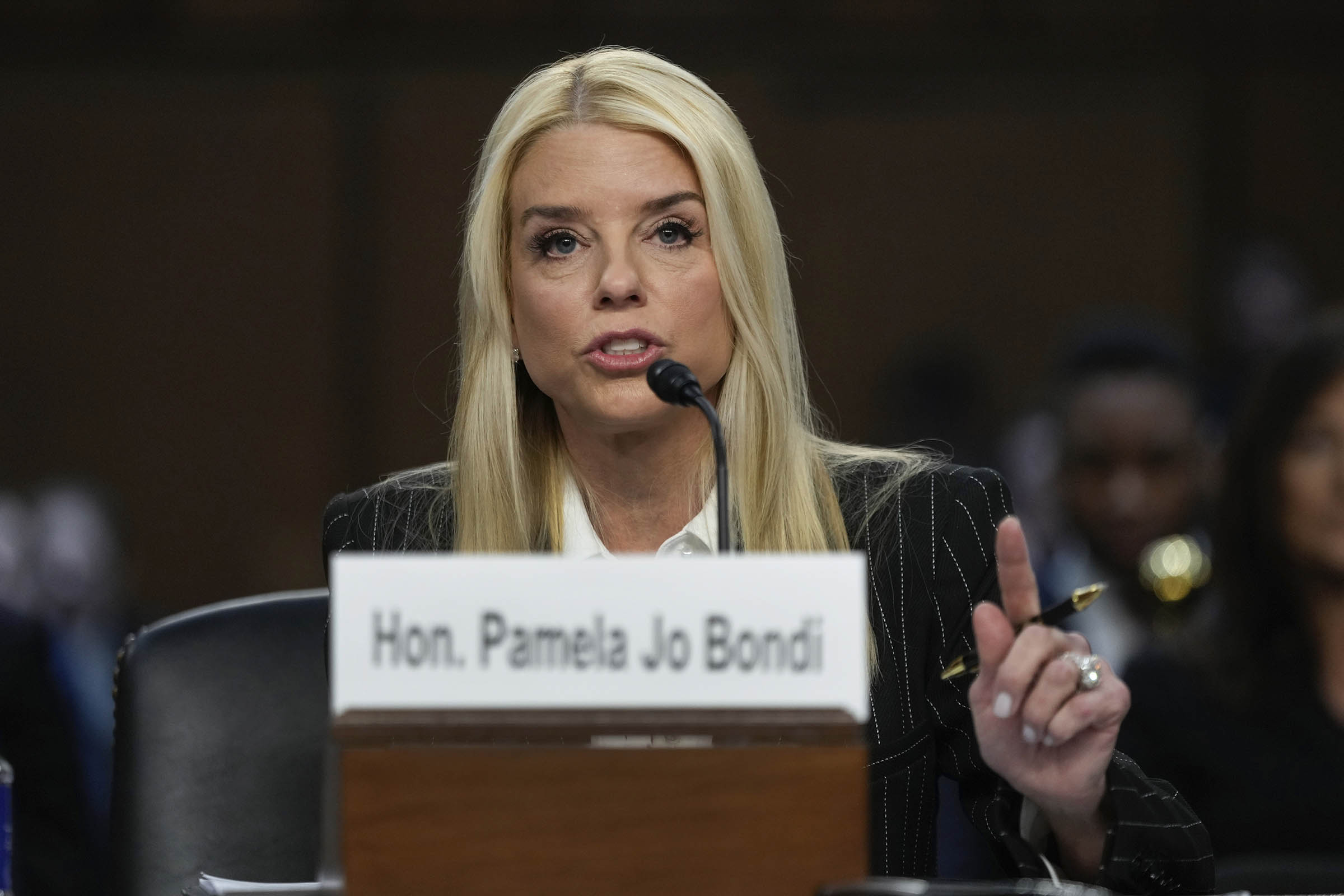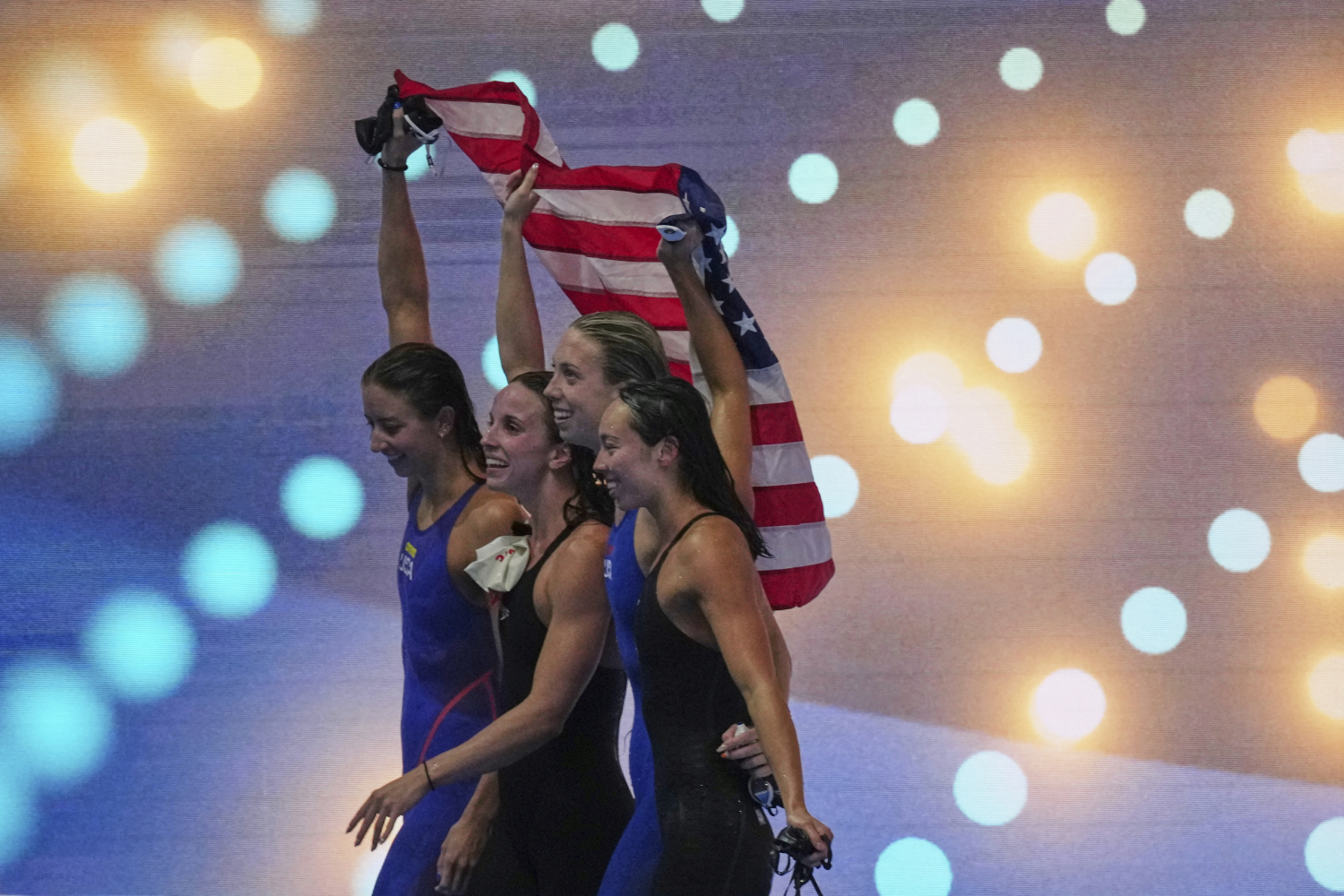By STAN CHOE AP Business Writer
NEW YORK (AP) — U.S. stocks rallied on Monday and won back most of their sharp loss from last week, when worries about how President Donald Trump’s tariffs may be punishing the economy sent a shudder through Wall Street.
The S&P 500 jumped 1.5% to follow up its worst day since May with its best since May. The Dow Jones Industrial Average climbed 585 points, or 1.3%, and the Nasdaq composite leaped 2%.
Idexx Laboratories helped lead the way and soared 27.5% after the seller of veterinary instruments and other health care products reported a stronger profit for the spring than analysts expected. It also raised its forecast for profit over the full year.
Tyson Foods likewise delivered a bigger-than-expected profit for the latest quarter, and the company behind the Jimmy Dean and Hillshire Farms brands rose 2.4%.
They helped make up for a nearly 3% loss for Berkshire Hathaway after Warren Buffett’s company reported a drop in profit for its latest quarter from a year earlier. The drop-off was due in part to the falling value of its investment in Kraft Heinz.
The pressure is on U.S. companies to deliver bigger profits after their stock prices shot to record after record recently. The jump in stock prices from a low point in April raised criticism that the broad market had become too expensive.
Stocks are coming off their worst week since May not so much because of that criticism but because of worries that Trump’s tariffs may be hitting the U.S. economy following a longer wait than some economists had expected. Job growth slowed sharply last month, and the unemployment rate worsened to 4.2%.
Trump reacted to Friday’s disappointing jobs numbers by firing the person in charge of compiling them. He also continued his criticism of the Federal Reserve, which could lower interest rates in order to pump adrenaline into the economy.
The Fed has instead been keeping rates steady this year, in part because lower rates can send inflation higher, and Trump’s tariffs may be set to increase prices for U.S. households.
Friday’s stunningly weak jobs report did raise expectations on Wall Street that the Fed will cut interest rates at its next meeting in September. That caused Treasury yields to slump in the bond market, and they eased a bit more on Monday.
The yield on the 10-year Treasury slipped to 4.19% from 4.23% late Friday.
“In our view, if the Fed starts to cut rates at its September meeting, we believe this would be supportive for markets,” according to David Lefkowitz, head of US equities at UBS Global Wealth Management.
Such hopes, combined with profit reports from big U.S. companies that have largely come in better than expected, could help steady a U.S. stock market that may have been due for some turbulence. Before Friday, the S&P 500 had gone more than a month without a daily swing of 1%, either up or down.
This upcoming week may feature fewer fireworks following last week’s jobs report and profit updates from some of Wall Street’s most influential companies. This week’s highlights will likely include earnings reports from The Walt Disney Co., McDonald’s and Caterpillar, along with updates on U.S. business activity.
On Wall Street, American Eagle Outfitters jumped 23.6% after Trump weighed in on the debate surrounding the retailer’s advertisements, which highlight actor Sydney Sweeney’s great jeans. Some critics thought the reference to the blonde-haired and blue-eyed actor’s “great genes” may be extolling a narrow set of beauty standards. “Go get ’em Sydney!” Trump said on his social media network.
Wayfair climbed 12.7% after the retailer of furniture and home decor said accelerating growth helped it make more in profit and revenue during the spring than analysts expected.
Tesla rose 2.2% after awarding CEO Elon Musk 96 million shares of restricted stock valued at approximately $29 billion. The move could remove potential worries that Musk may leave the company.
CommScope soared 86.3% after reaching a deal to sell its connectivity and cable business to Amphenol for $10.5 billion in cash, while Amphenol rose 4.1%.
They helped offset a 15.6% loss for On Semiconductor, which only matched analysts’ expectations for profit in the latest quarter. The company, which sells to the auto and industrial industries, said it’s beginning to see “signs of stabilization” across its customers.
All told, the S&P 500 rose 91.93 points to 6,329.94. The Dow Jones Industrial Average climbed 585.06 to 44,173.64, and the Nasdaq composite leaped 403.45 to 21,053.58.
In stock markets abroad, indexes rose across much of Europe and Asia.
South Korea’s Kospi rose 0.9%, and France’s CAC 40 climbed 1.1%, while Japan’s Nikkei 225 was an outlier with a drop of 1.2%.
___
This version has been corrected to say that the U.S. stock market had its worst week last week since May, not April.
___
AP Business Writers Matt Ott and Elaine Kurtenbach contributed.










